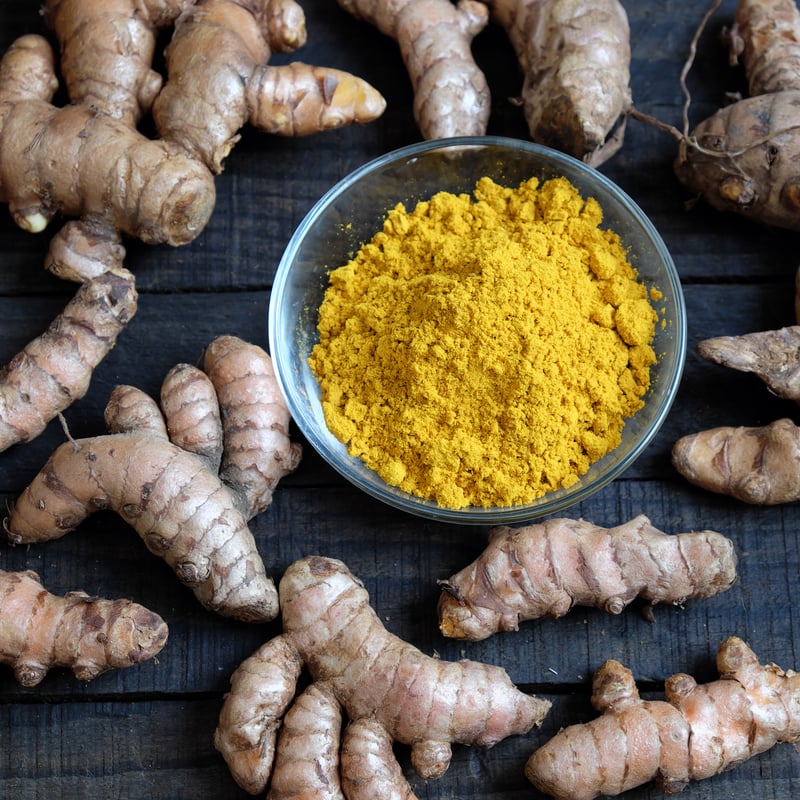Are You Suffering from “Hidden” Inflammation in Your Body?

Redness, pain, swelling… these are the obvious tell-tale signs of inflammation. They’re just a few of the symptoms typically experienced after an injury or infection. Reactions like these are what we most commonly recognize and are why inflammation proves to be a vital and natural response in the body’s defense system. This type of inflammation, known as acute inflammation, is considered a good version, and it’s something everyone experiences. Acute inflammation is short-lived and necessary for survival and healing.
Considering inflammation is traditionally good for us, why is there so much negativity surrounding the term? Well, as it turns out, there are two types of inflammation: good and bad. As mentioned above, acute inflammation is regarded as good. Another type, which has gained an eye-opening amount of attention in recent years, is known as chronic inflammation, and that’s what’s known as the bad type.
The Dangers of Chronic Inflammation
Chronic inflammation is a slower form of inflammation, lasting for a prolonged period. It can occur when the immune system is unsuccessfully trying to fend off an infection, when the immune system becomes confused, or when the immune system senses something just isn’t right. Subsequently, chronic inflammation can lead to a host of side effects, leaving us feeling defenseless.
Further, it has been named the unhealthy type of inflammation because chronic inflammation can be traced in autoimmune diseases and conditions like rheumatoid arthritis, asthma, allergies, sensitivities, gastrointestinal issues, and even worse. It can also be found at the root of chronic illnesses such as heart disease, obesity, diabetes, dementia, and cancer. As a result, chronic inflammation has become a known aspect of almost every modern disease.
Even more, chronic inflammation has the potential to go unnoticed and build up in the body, leading to dangerous outcomes. That’s some scary stuff. So, how can we know if inflammation is present in the body and, more importantly, when it goes from being good to bad?
7 Signs of Hidden Inflammation
Currently, the CDC has found that chronic illness due to chronic inflammation affects nearly 133 million Americans or about 40% of the population. 1 However, many more people could be suffering from chronic inflammation without even realizing it.
The symptoms of inflammation can be so normalized we may even attribute them to other causes. Unfortunately, more often than not, the root of the issue leads back to chronic forms of inflammation.
As a result, it is even more important to make sure you are staying in tune with your body and recognizing what’s normal and what’s not. Below are just some of the signs which may indicate you’re suffering from hidden inflammation.
1. Fatigue
More than just being sleepy in the morning, inflammation can cause consistent feelings of tiredness and exhaustion. Regardless of how much sleep you are getting, you may experience feelings of being rundown with low energy levels. This is because when chronic inflammation is present, your immune system works overtime to control its response. In turn, chronic inflammation increases cellular energy requirements to ensure rapid rejuvenation of immune cells and further depletes energy stores.
2. Joint & Muscle Pain
Chronic inflammation is very commonly associated with rheumatoid arthritis. This is because the immune system releases inflammatory cytokines, which become elevated in the body and attack muscles and joints. If you’re feeling stiffness, redness, swelling, tingling, or pain in the joints or muscle, this could be a sign of chronic inflammation.
3. Stubborn Belly Fat
Obesity is also commonly correlated with chronic inflammation, and excess visceral fat or belly fat may be a clear sign. Research has shown that fat cells inside the abdomen secrete molecules that increase inflammation. 2
4. Allergy Symptoms
Having a runny nose and watery eyes are common with the seasons changing, but it’s possible that chronic inflammation could also be responsible. Repetitive exposure to allergens could be guilty for causing chronic allergic inflammation. Over time, this exposure can produce long-term changes in organs and their ability to function optimally.
5. Depression
Anxiety and stress can cause inflammation, and low-grade inflammation may reduce motivation to perform daily tasks, leading to depression. This is because increased inflammatory activation of the immune system affects both the periphery and the central nervous systems. 3
Additionally, research has found that those who experience clinical depression exhibit an inflammatory increase of 30% within the brain. 4
6. Itchy Skin
More than just having dry skin, if you have a rash that doesn’t go away or red, itchy, dry skin patches accompanied by swelling, you may be experiencing chronic inflammation. With this, the itch causes a reaction, which causes swelling and then prompts more itching, thus becoming a frustrating inflammatory cycle. Conditions like eczema and psoriasis are linked to hypersensitivity of the immune system.
7. Stomach Problems
Bloating, diarrhea, cramping, and gassiness are all connected to chronic inflammation and can be signs of various stomach ailments. Chronic inflammation throughout the body can also contribute to leaky gut syndrome, which can cause toxins to “leak” into the rest of the body. A “leaky gut” can further fuel ongoing systemic inflammation and contribute to digestive symptoms.
If you are experiencing any of the symptoms above, it could be a sign that you may, in fact, be suffering from hidden inflammation. As a result, the quest now begins to find the cause and get your body back into balance. Luckily, there are many steps you can take to help reduce these symptoms and get back on track to feeling better than ever.
What Causes Hidden Inflammation
First off, it is important to know that there are two common biomarkers of inflammation. Interleukin-6 and C-reactive protein both play essential roles in the regulation of inflammation. More specifically, interleukin-6 is a proinflammatory cytokine that’s upregulated during episodes of inflammation which then stimulate C-reactive protein.
C-reactive protein has two forms—one is produced locally in inflamed or damaged tissues. The other is routinely produced in the absence of inflammation and may have net anti-inflammatory effects. 5 Studies have shown higher levels of these biomarkers increase the risk of chronic conditions, whereas lower levels lead to more successful aging. 6,7
There are several tests to detect inflammation in the body, including the C-reactive protein test. C-reactive protein gives you a non-specific sense of inflammatory markers circulating through your body. Other indicators include high levels of interleukin, an elevated erythrocyte, a high white blood cell count, and a low albumin count.
In addition to these tests and biomarkers, you can begin to determine your own triggers and causes for inflammation by paying closer attention to how your body reacts to various situations. These can be different for everyone depending on lifestyle and environment. By understanding this, we can provide the right conditions for it to thrive to begin to help reset the body’s natural immune balance. Triggers for inflammation can include:
- Poor diet
- Lack of exercise
- Stress
- Lack of quality sleep
- Infections
- Hidden allergens
- Toxins
This is a general list, so it may seem overwhelming, considering there are a number of sources chronic inflammation could be stemming from, which thus makes it harder to know where to begin. Nevertheless, one easy first step to try to take control of inflammation is by changing your diet. Diet can be one of the biggest offenders in wreaking havoc on our health, but luckily, it is also one of the factors we can have the greatest control over.
Regardless, diets can seem scary, and we may be hesitant to change them. But a healthy diet should focus on nourishing your body with what makes you feel your best.
How to Reduce Hidden Inflammation
When trying to reset your inflammatory responses, the anti-inflammatory diet is a good place to start. This diet focuses on consuming anti-inflammatory foods, such as:
- Antioxidant-rich foods like berries and cherries
- Fatty fish like salmon, sardines, or mackerel
- Fresh, colorful fruits and veggies
- Green tea and coffee
- Spices like turmeric and ginger
- Whole grains
- Legumes
Beyond diet, other steps you can take to help reduce inflammation include:
1. Maintaining good oral health
Researchers have found the bacteria that cause swelling in the gums may be a source of inflammation and thickening of the arteries. Studies have also shown that treating signs of gum disease results in lower levels of inflammation. 8
2. Support your gut
Intestinal inflammation and inflammatory bowel disease are commonly associated with dysbiosis of the gut microbiota. However, helping to reset your gut with beneficial bacteria with key nutrients may help the body fight inflammation. 9 Similarly, taking omega-3 supplements have been found to support the body in many studies by decreasing interleukin-6. 10,11
3. Exercise Regularly
Regular exercise creates less inflammation in the body and protects against metabolic syndrome. During exercise, the body activates the adrenergic receptors of immune cells and suppresses the production of monocytic cytokines. 12 However, be sure not to push your body over its limits. High-intensity workouts may have an opposite effect, creating more inflammation.
Identifying the connection between your body and sources of inflammation can be an important first step in learning how to take back control of your life. Regardless of how you choose to confront your inflammation or if you suspect you have inflammation at all, we can all benefit from reducing hidden chronic inflammation and the risks associated with it, all while enjoying a healthier lifestyle.





 7 Signs Your Body is Seriously Low on Collagen (not just wrinkles)
7 Signs Your Body is Seriously Low on Collagen (not just wrinkles) Health Expert: "Turmeric Doesn't Work (unless...)"
Health Expert: "Turmeric Doesn't Work (unless...)" 3 Warning Signs Your Probiotic Supplement is a Total Waste
3 Warning Signs Your Probiotic Supplement is a Total Waste

